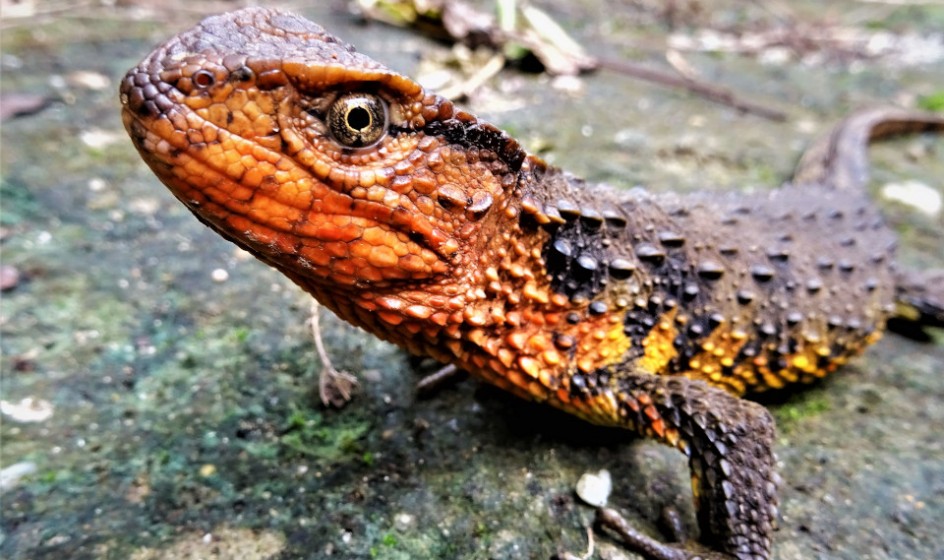

Vietnamese Crocodile Lizard

Only 100 left: saving the Vietnamese Crocodile Lizard from immediate extinction
The Vietnamese crocodile lizard (Shinisaurus crocodilurus vietnamensis) is endangered by habitat loss and overcollection for the international trade. According to the most recent estimate, fewer than 100 mature individuals might still exit in its natural habitat in northeastern Vietnam. Due to a continued decline, the immediate implementation of conservation measures is crucial to protect the Vietnamese population from extinction.
This project follows an integrative approach towards strengthening conservation of the population. This approach includes a survey of the remaining subpopulation in several provinces in northern Vietnam using both traditional surveying methods and an advanced environmental DNA (eDNA) technique. The data are not only crucial for targeted conservation measures but can also be used for future reintroduction efforts, should the wild population severely decline or completely vanish. The project furthermore investigates collecting and trafficking activities through interviews with local people and in online platforms. Protected area staff and forest rangers are trained in using the Spatial Monitoring and Reporting Tool (SMART) to track effectiveness of patrolling activities. Local people and tourists in the region are informed of the project findings.
Species: Vietnamese crocodile lizard (Shinisaurus crocodilurus vietnamensis)
Region: Vietnam
Implementing partner: Central Institute for Natural Resources and Environmental Studies
Funding period: October 2021 - September 2022
Photo: © Prof. Thomas Ziegler
Project goals
- To identify priority sites for conservation actions to protect the Vietnamese crocodile lizard
- To assess the hunting and trafficking threats to the species
- To train and raise awareness of relevant audience and stakeholders
- To develop a conservation assessment for the species
Planned activities
- To conduct field surveys with traditional and eDNA methods, as well as interview techniques
- To conduct regular on-site market surveys as well as online selling platform surveys
- To train local rangers and conservation practitioners in patrolling techniques and SMART software
- To use posters in order to create awareness amongst local people and tourists
- To develop a conservation assessment for the species (results summary, recommendations)